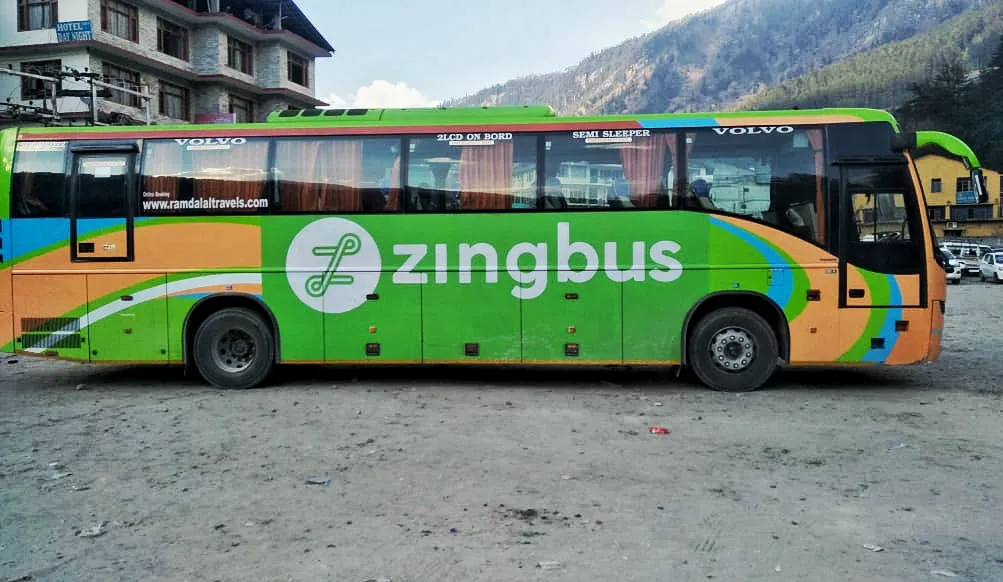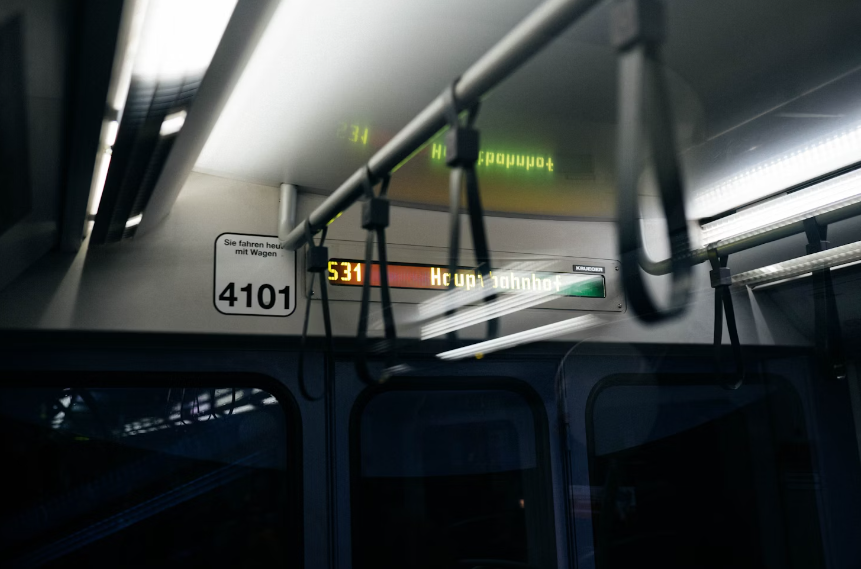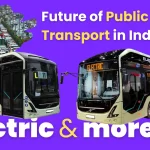
India, as a developing nation, is growing at a faster pace, with no doubts. The country is seeing a robust transportation revolution by introducing electric bus fleets in several metro cities like Delhi and Bangalore. Electric buses in India’s public transport system are emerging as the central pillar in the nation’s sustainable mobility future and net zero goals. As urban areas see increased pollution and call for efficient public transportation, electric buses can provide a promising solution that aligns well with the country’s environmental goals, economic stability, and sensibility. The Indian government’s ambitious FAME (Faster Adoption and Manufacturing of Hybrid and Electric Vehicles) scheme, particularly FAME II, has demonstrated a solid commitment to power up the adoption of electric vehicles in India, with a strong focus on the affordability of Electric Bus price in India to empower public transportation through eMobility. Initiatives like these and several other state-level policies in India for electric vehicles’ adoption are creating an inclusive environment to electrify public bus transport systems across the country.
In this article, we’ll curiously delve into the economics of adopting electric buses in India, examining the electric bus price in India to own an Electric Bus and the long-term benefits of introducing electric buses in the country. We will also focus on understanding the actual cost of ownership of an Electric Bus, its operational benefits, and the broader impact these heavy-duty electric vehicles have on society and the environment.
Initial Investment: The Electric Bus Price in India
The initial cost of electric buses is one of the most pressing issues for transit authorities and bus operators like zingbus in India. In the Indian market, electric bus prices typically range from ₹1.5 crore to ₹3.5 crore, depending on various factors such as size, specifications, and manufacturer.
For instance, popular models like the Tata Starbus Urban and Ashok Leyland Circuit S are priced at approximately ₹1.5 crore (starting price), offering features such as swappable batteries and a seating capacity of up to 65 passengers. On the higher end, electric buses like the JBM ECOLIFE cost around ₹2 crore and come equipped with advanced lithium-ion batteries that can enhance electric bus efficiency and reduce emissions in localities where they are operated.
Despite the high upfront costs, electric buses are increasingly seen as a sustainable investment due to their low operating costs and environmental benefits, making them an attractive option for modern public transportation systems in India.
Electric Bus Price In India: The Local vs. International Manufacturers in the Country
Electric Bus manufacturers in India, such as Tata Motors, Ashok Leyland, Eicher, and JBM Auto, are the country’s top electric bus manufacturers and OEMs. They offer competitive pricing compared to international brands.
Their prices generally range from:
- 9-meter buses: ₹1.5-2.0 crore
- 12-meter buses: ₹2.0-3.0 crore
International manufacturers like BYD, Tata Motors Limited, Olectra Greentech Ltd., PMI Electro Mobility Solutions Pvt. Ltd., VE Commercial Vehicles Limited (VECV), Volvo Group India Private Limited, Mercedes-Benz Group (FKA Daimler AG), and others, while typically more expensive, often bring advanced technology and proven track records:
- European manufacturers: ₹2.5-4.0 crore
- Chinese manufacturers of Electric Buses: ₹2.0-3.5 crore
Factors Affecting Electric Bus Price In India
Key Factors Influence the Final Electric Bus Price In India
Battery Pack Size of an Electric Bus
- Small capacity (150-200 kWh): Lower initial cost but limited range
- Medium capacity (250-300 kWh): Balance of range and cost
- Large capacity (350+ kWh): Higher cost but the maximum range of an Electric Bus
Electric Bus Range Capabilities
- Short-range (150-200 km): Lower cost, suitable for urban routes
- Long-range (250+ km): Higher cost, ideal for intercity operations
Features and Specifications of an Electric Bus
- Air conditioning systems (AC)
- Passenger capacity
- Safety features
- Technology integration
Understanding the Key Cost Components
Electric Bus Battery Pack
The battery pack represents 30-40% of the total vehicle cost (similar to diesel engines for traditional bus models), making it the single most expensive component.
Current prices in India for Electric Bus Battery with Capacity are:
- Standard LFP batteries: ₹10,000-12,000 per kWh
- Advanced NMC batteries: ₹12,000-15,000 per kWh
For a typical 300 kWh battery pack, the prices translate to:
- Battery cost: ₹30-45 lakhs
- Expected lifespan: 7-8 years
- Warranty coverage: Usually 5-6 years
Electric Bus Charging Infrastructure in India
The country is undergoing a tremendous transformation in its transportation sector, particularly with adopting e-buses and establishing EV charging infrastructure across the country. The shift towards introducing electric buses and heavy-duty electric vehicles in India is primarily driven by the need to minimize CO2 emissions and upgrade urban mobility for the country’s sustainable future.
The State of Electric Vehicle Charging Stations in India
1. Government Initiatives: The Indian government has set ambitious targets to electrify various segments of the transport sector by 2030, aiming for:
- 70% of commercial vehicles
- 30% of private cars
- 40% of buses
- 80% of two-wheelers and three-wheelers
2. Funding and Support: Under the Faster Adoption and Manufacturing of Electric Vehicles (FAME) scheme, the government of India has allocated ₹1,000 crore (approx. USD 125.6 million) specifically for developing charging stations. This funding supports the installation of EV charging stations across all urban areas of the country and on national highways.
3. Deployment Statistics: The FAME II initiative has sanctioned about 2,636 EV electric vehicle charging stations across 62 cities in India, with an additional 1,544 stations planned for national highways.
4. Private Sector Involvement: Power-generating companies like Tata Power actively contribute to the EV charging infrastructure by building EV charging points in urban areas mainly powered by renewable energy sources.
EV Charging Infrastructure: Challenges and Recommendations
1. Land Availability: A primary barrier to expanding public charging station infrastructure is the high cost and limited availability of land in urban areas with high populations.
2. Power Distribution Capacity: India’s existing power distribution systems often lack the capacity and facility to support widespread EV charging, creating an urgent need to upgrade them to electrical grids.
3. Charging Times: Long charging times remain a concern, which can deter users from adopting electric buses over traditional diesel options.
4. Operational Efficiency of Electric Buses: Recent analyses indicate that cities must optimize their operational plans for e-buses based on range requirements and daily operational kilometres. For instance, Mumbai’s transit authority has increased its range of requirements for e-buses to ensure better utilization and reduced operational costs.
Future Directions for Electric Bus Charging Stations In India
To effectively integrate electric buses into India’s urban transport systems, various strategies are recommended by experts:
Enhanced Planning for Charging Stations: Cities should develop comprehensive plans that consider both the operational needs of e-buses and the necessary charging infrastructure. This includes determining optimal locations for charging stations based on usage patterns and traffic flows.
Opportunity Charging Points: Implementing opportunity charging systems—where buses can charge during quick stops—could enhance operational efficiency without requiring extensive downtime.
Public-Private Partnerships (PPP Model): Collaborations between government bodies and private companies can facilitate investment in charging infrastructure while sharing risks and responsibilities.
While India is making waves in developing its electric bus charging infrastructure, addressing challenges related to land use, power capacity, and operational efficiency will be vital for achieving its electrification and net zero goals.
Taking these insights and future recommendations into consideration, setting up charging infrastructure for electric buses requires significant investments and state-of-the-art engineering:
1. Depot Charging Stations for Electric Buses
- Slow charging (30-60 kW): ₹5-10 lakhs per point
- Fast charging (120-150 kW): ₹20-30 lakhs per point
- Ultra-fast charging (200+ kW): ₹40-50 lakhs per point
2. Installation Costs of an Electric Bus
- Civil work: ₹5-10 lakhs per location
- Electrical infrastructure: ₹10-20 lakhs
- Grid connection upgrades: Varies by location
3. Maintenance and Operation Costs of an Electric Bus
- Annual maintenance cost: 3-5% of infrastructure cost
- Power upgrade costs: Location-dependent
Range and Operational Costs of an Electric Bus In India
Electric buses in India are becoming increasingly viable, both in terms of range and operational costs.
Operating Economics: The operational cost for electric buses is estimated at approximately ₹7-9/km, compared to ₹20-25//km for diesel buses. While the initial capital expenditure for electric buses is higher—around ₹1.4 crore for a 12-meter bus—the total cost of ownership (TCO) becomes more favourable over time due to lower maintenance and fuel costs. Government initiatives like FAME II also provide subsidies that reduce the TCO, making electric buses more attractive for public transport systems.

Daily operational costs in terms of associated energy costs for electric buses show significant advantages:
- Electric Bus: ₹7-9 per kilometre
- Diesel Engine Bus: ₹20-25 per kilometre
- Annual Savings Against a Traditional Bus: ₹3-4 lakhs per electric bus
Range Considerations: Typically, electric buses equipped with a 125 kWh battery can cover around 200 km on a single charge, while those with a 320 kWh battery can extend this range significantly, making them suitable for urban routes where daily distances can vary.
- The optimal range for city operations: 150-200 km
- Extended range requirements: Additional battery cost vs. operational flexibility that can impact route planning and scheduling
Maintenance Benefits of Owning an Electric Bus
Electric buses demonstrate lower maintenance costs compared to their diesel counterparts:
- 25-30% reduction in maintenance expenses
- Fewer moving parts requiring service
- Extended service intervals
- Reduced downtime
Government Subsidies and Incentives
FAME II Scheme and e-Amrit Benefits
Under schemes like FAME-II, significant financial incentives are available for electric buses. Specifically, the government offers up to ₹20,000 per kWh for electric buses, which can substantially lower the purchase cost.
The FAME II scheme provides substantial support:
- Up to ₹55 lakhs per bus subsidy
- Additional incentives for charging infrastructure
- Operating expense support in some cases
The e-AMRIT initiative facilitates upfront subsidies that make electric buses more financially viable for operators. This is crucial for public transportation systems looking to transition to greener alternatives.
State-Level Support
Various states offer additional benefits to accelerate Electric Bus adoption in India:
- Registration tax exemptions
- Electricity duty waivers
- Land allocation for charging infrastructure
- Additional purchase subsidies
Long-Term Savings and Environmental Benefits of Operating Electric Buses In India
Electric buses in India offer long-term savings and environmental benefits, primarily through reduced operational costs and lower emissions.
While the electric bus price in India is higher at its initial stage, the lower fuel and maintenance costs can lead to valuable savings over time, making it more economically viable in the long run compared to conventional buses in the country.

Transitioning to electric buses is crucial for reducing greenhouse gas (GHG) emissions and improving urban air quality. This aligns well with India’s goals for sustainable transportation and its commitment to achieving net-zero emissions by 2070.
Electric Bus Financial Benefits Over Time
- An electric bus demonstrates significant savings over its lifecycle:
- Operational cost savings: ₹15-20 lakhs annually
- Maintenance cost reduction: ₹3-5 lakhs annually
- Total lifecycle savings: ₹1-1.5 crore for 10+ years
Environmental Impact of Electric Buses
The environmental benefits of Electric Buses are substantial for India:
- CO2 reduction: 100 tons/bus yearly
- NOx and particulate matter reduction: 90-95%
- Noise pollution reduction: 50% compared to buses with diesel engine
Challenges to Electric Bus Adoption In India
Despite the several benefits of adopting Electric Buses in India, there are a significant number of challenges that need experts’ attention:
Financial Barriers
- High upfront costs
- Limited financing options
- Risk perception among lenders
Infrastructure Concerns
- Grid capacity limitations
- Land availability for depots
- Installation complexities
Operational Challenges
- Range Anxiety of an Electric Bus
- Driver training requirements
- Maintenance expertise
Summary
The shifting towards electric buses in India showcases a multifaceted opportunity to enable sustainable urban transportation. Billions of people use buses daily. With trusted government support, significant operational and maintenance savings, and clear environmental benefits, the adoption of electric buses can achieve new heights.
However, addressing safety and electric bus charging infrastructure challenges will be crucial to ensuring a successful transition. As India progresses in this endeavour, the focus must remain on building a resilient ecosystem supporting safe and efficient electric mobility solutions.
Looking ahead, several factors will further improve the value proposition:
- Battery technology advancements for enhanced Electric Bus efficiency
- Charging infrastructure expansion across India
- Economies of scale in manufacturing of Electric Buses in India
- Improved financing options to increase the adoption of Electric Buses in India
In a nutshell, cities and transport authorities should decide to invest in electric buses based on long-term value rather than just initial cost. As technology advances in the next few years and support infrastructure develops, electric buses will increasingly become the best choice for public transportation in India and the world.






Leave a Reply